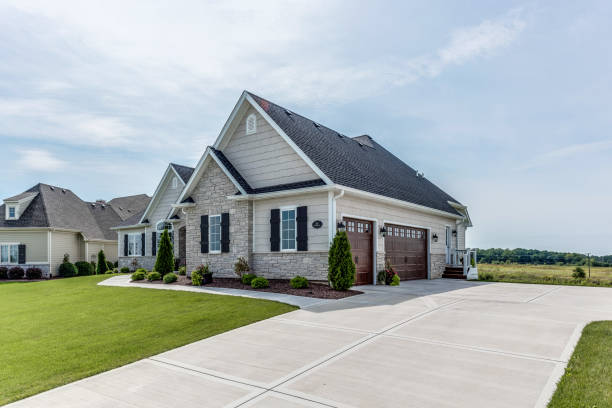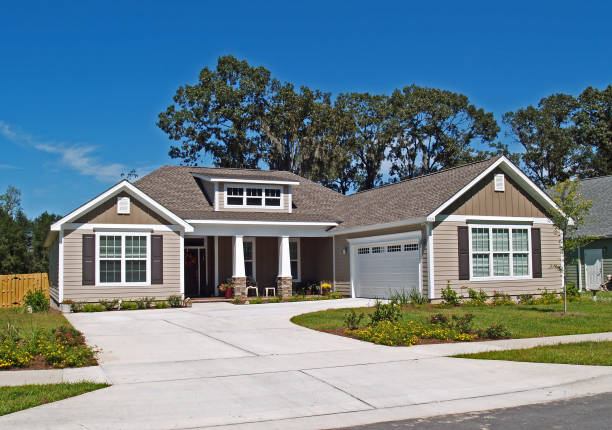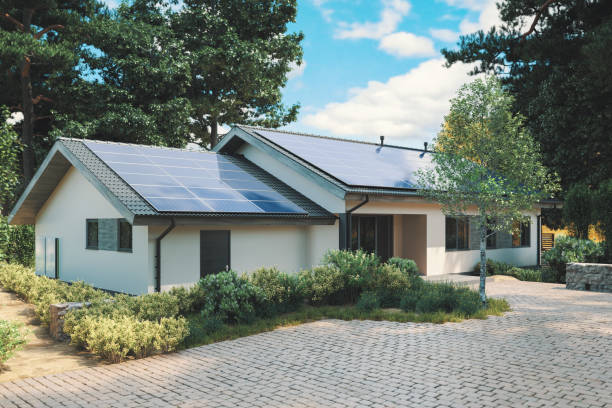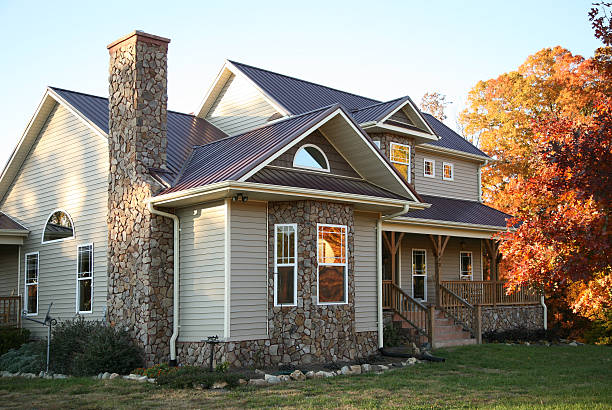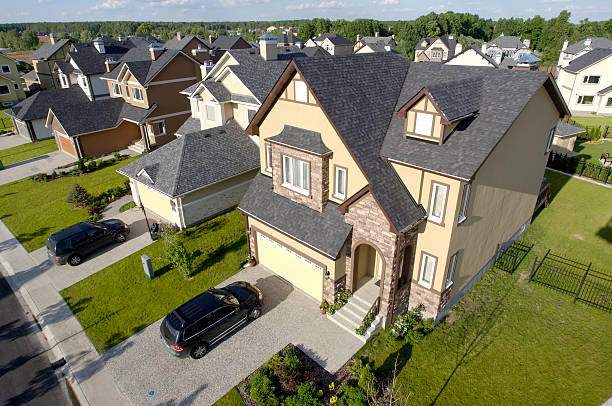The Cost of a Roof Replacement: What to Expect and How to Save
A roof replacement is a significant investment for homeowners, but it’s also one of the most important projects you can undertake to protect your home. Whether your roof has reached the end of its lifespan, suffered severe damage, or simply needs an upgrade, knowing what to expect in terms of cost can help you plan and budget accordingly. Additionally, understanding ways to save on your roof replacement can help reduce the financial strain while still ensuring that you get a high-quality, long-lasting roof.
In this article, we’ll break down the typical costs of a roof replacement, the factors that influence the price, and practical tips on how to save money during the process.
Understanding Roof Replacement Costs
Average Roof Replacement Cost
The cost of a roof replacement can vary significantly depending on various factors, including the type of roof, the size of your home, the materials used, and your location. On average, homeowners can expect to pay anywhere from $5,000 to $12,000 for a full roof replacement. However, for more complex roofing projects or larger homes, the cost can exceed $20,000.
Factors That Affect Roof Replacement Costs:
- Roof Size: The larger your roof, the more materials and labor will be needed, which increases the overall cost.
- Roof Pitch and Complexity: Steep or complex roofs with multiple angles or features (like skylights or chimneys) are more challenging to replace and require more labor, driving up the cost.
- Material Choices: The type of material you choose for your new roof significantly impacts the price. Asphalt shingles are typically the most affordable, while materials like slate, metal, or tile can be much more expensive.
- Labor Costs: Roof replacement involves skilled labor, and rates can vary depending on your location and the experience of the contractors.
- Tear-Off Costs: If your existing roof has multiple layers of shingles that need to be removed, the cost of tearing off the old roof can add to the price.
- Disposal Fees: Old roofing materials need to be disposed of properly, and these disposal fees are typically included in the total cost of the replacement.
How to Estimate Your Roof Replacement Cost
Step 1: Measure the Roof
The first step in estimating the cost is determining the size of your roof, typically measured in “squares.” One square of roofing covers 100 square feet. To find your roof’s square footage, you can multiply the length by the width of the roof and then divide by 100. For example, a roof that measures 40 feet by 30 feet would be 12 squares.
Step 2: Select Your Materials
Next, choose the type of material you want to use for your roof replacement. Here are some common options and their average costs per square:
- Asphalt Shingles: $90 – $100 per square (the most affordable option).
- Wood Shingles or Shakes: $200 – $600 per square.
- Metal Roofing: $300 – $700 per square.
- Clay or Concrete Tiles: $500 – $1,000 per square.
- Slate Tiles: $800 – $1,500 per square (one of the most expensive options).
Step 3: Get Quotes from Contractors
Finally, contact several roofing contractors to get estimates based on your roof size and material preferences. A reputable contractor should offer a detailed quote that includes the cost of materials, labor, disposal, and any additional services. Comparing quotes will give you a better sense of the average cost for your project and allow you to identify potential savings opportunities.
Additional Costs to Consider
While the basic roof replacement costs may seem straightforward, there are often hidden or additional expenses to account for:
- Roof Deck Repairs: If your roof deck is damaged or weakened, it will need to be repaired before installing new roofing materials, adding to the overall cost.
- Flashing and Ventilation: If your roof has issues with flashing or ventilation, these may need to be updated or replaced as part of the project.
- Insurance and Permits: Some areas require permits for roofing work, and insurance may be necessary to cover potential accidents during installation.
- Water Damage Repairs: If there’s underlying water damage, such as rot or mold, it will need to be repaired before the new roof can be installed.
- Upgrading Gutters: In some cases, roof replacement may require you to upgrade or replace your gutters to ensure proper water drainage.
How to Save on Roof Replacement Costs
Replacing your roof doesn’t have to break the bank. With careful planning and some smart strategies, you can reduce the overall cost of the project. Here are some tips on how to save money:
Shop Around for Multiple Quotes
Get at least three quotes from reputable contractors in your area. While the cheapest quote isn’t always the best, comparing quotes can give you a good sense of the market rate and help you find a competitive price.
Choose Affordable Materials
If you’re looking to save, consider opting for asphalt shingles, which are one of the most affordable materials available. While they may not last as long as metal or tile, they still provide adequate protection and are often the best choice for homeowners on a budget.
Avoid Unnecessary Add-Ons
While it can be tempting to upgrade to premium features such as skylights or custom roof details, these add-ons can quickly drive up the cost. Stick to the basics unless there’s a critical need for such upgrades.
Consider Roof Overlays
If your existing roof has only one layer of shingles, you might be able to save money by having new shingles installed over the old ones. However, this is only recommended if the current roof is in good condition and there are no signs of leaks or damage. Keep in mind that a roof overlay may not last as long as a full replacement.
Schedule Your Replacement in Off-Peak Seasons
Roofing contractors tend to be busiest in the spring and summer. By scheduling your roof replacement during the fall or winter months, you may be able to take advantage of lower labor costs and fewer scheduling conflicts.
Perform Basic Maintenance
Regular roof maintenance can extend the life of your roof and prevent costly repairs. Clean your gutters, remove debris, and inspect your roof for missing shingles or other signs of damage. If problems are caught early, you can avoid more expensive repairs or a full replacement down the road.
Financing Your Roof Replacement
If the cost of a roof replacement is too high to pay upfront, there are several financing options available:
- Home Equity Loan or Line of Credit: If you have equity in your home, you may be able to take out a loan to cover the cost of your roof replacement.
- Personal Loans: Some lenders offer personal loans for home improvement projects, which can help you finance your roof replacement.
- Roofing Company Financing: Many roofing companies offer financing plans with low or no interest for qualified buyers. Check with your contractor to see if this is an option.
- Insurance Claims: If your roof was damaged by a storm or other covered event, your homeowner’s insurance may help cover the cost of repairs or replacement. Be sure to contact your insurance company to discuss coverage options.
Conclusion
The cost of a roof replacement can be substantial, but with careful planning, research, and strategic choices, it’s possible to manage the expense effectively. By understanding the factors that influence the price, shopping around for multiple quotes, and opting for affordable materials, you can keep your costs in check while still ensuring a high-quality roof.
In the end, a well-maintained roof is essential for protecting your home, so it’s important to treat roof replacement as a long-term investment rather than a short-term expense.

